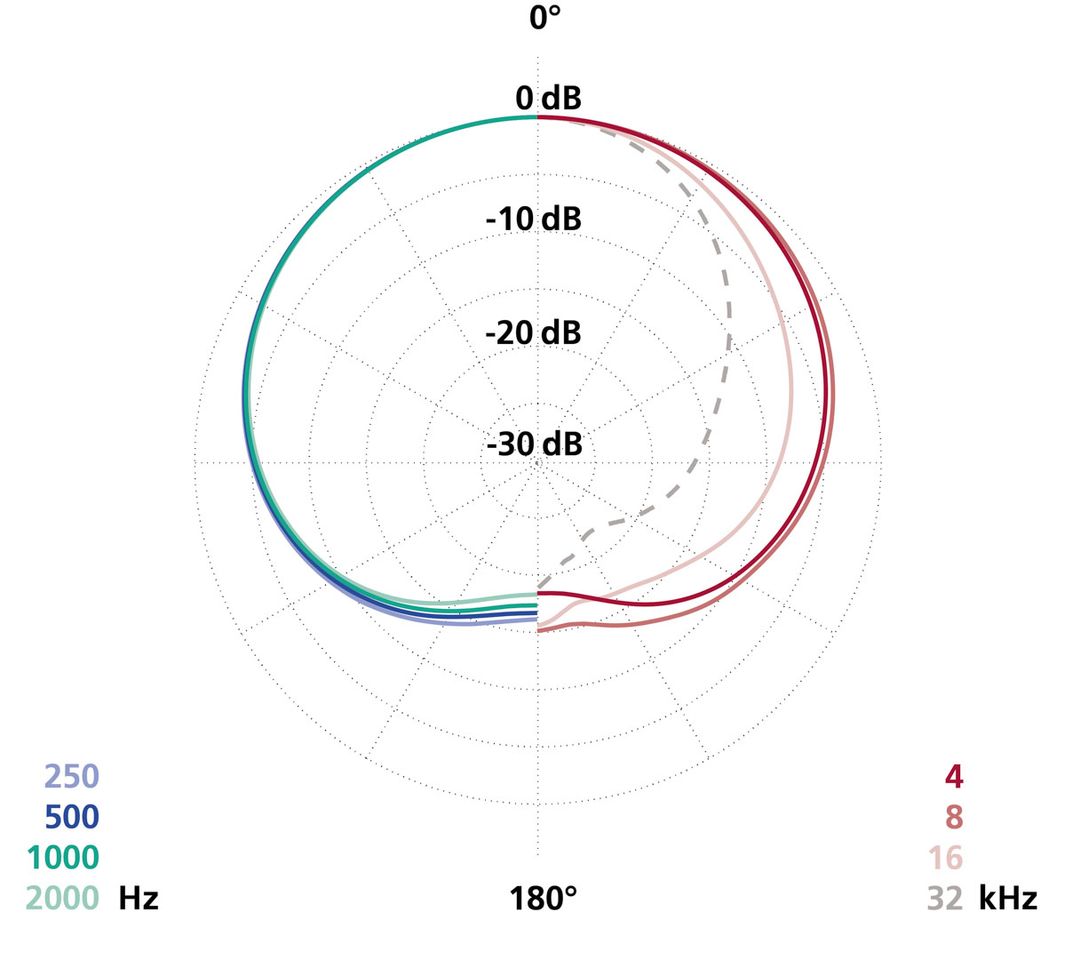Features
- new kind of directional pattern: Open Cardioid
- optimal combination of classic cardioid directionality (CCM 4) with the sonic character of the wide cardioid (CCM 21)
- directional pattern largely constant throughout the frequency range
- often preferred for spot miking and as a soloist’s microphone
This microphone can also be ordered as a modular Colette microphone, where the CMC 1 L amplifier is combined with an MK microphone capsule. (CMC 1 L + MK 22)
This variant allows the capsule to be exchanged and has advantages in terms of electrical properties in combination with digital wireless transmitters.
Order number
- No. 121007 CCM 22 L (standard Lemo version)
- No. 121008 CCM 22 K (fixed cable version with XLR)




